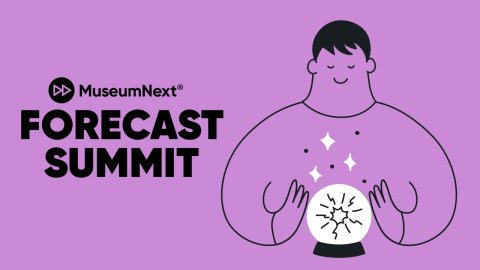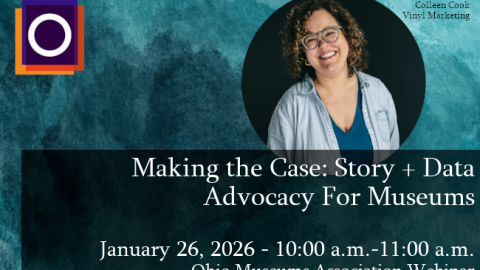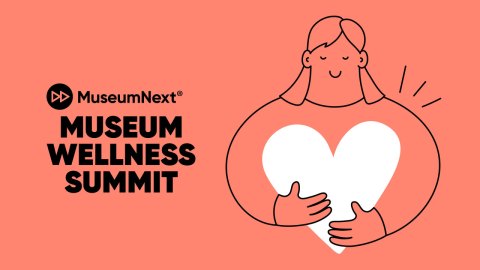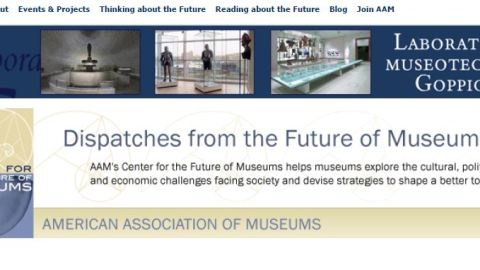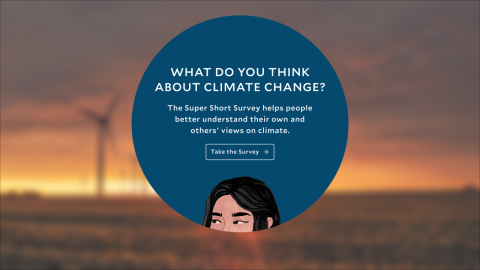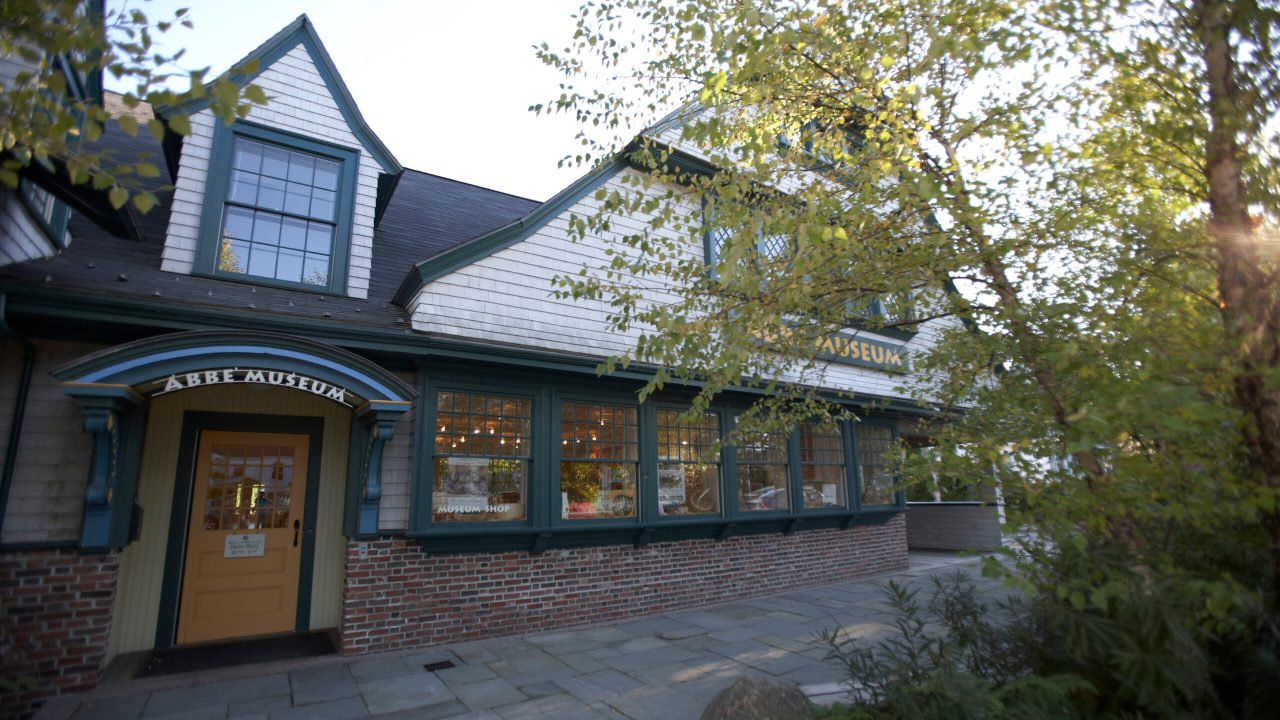
Ian Elsner describes Museum Archipelago (@museum_go on Twitter) as “a tiny podcast guiding you through the rocky landscape of museums.” As a devoted follower of the podcast, I was delighted when Ian recently interviewed Chris Newell, the first member of the Wabanaki Nations to lead the Abbe Museum in Bar Harbor, Maine. The Abbe is widely recognized as a leader in the work of decolonizing museum practice, and my colleagues and I have reported on this work on the Alliance blog, via the Museopunks podcast, and in TrendsWatch 2019. With Chris’ and Ian’s permission, I adapted some of their discussion for today’s post. The original recording is much longer—I highly recommend you listen to the episode or read a full transcript at the Museum Archipelago archives.
—Elizabeth Merritt, Founding Director, Center for the Future of Museums and Vice President, Strategic Foresight, American Alliance of Museums
Ian Elsner (Ian): Chris Newell remembers visiting the Abbe Museum in Bar Harbor, Maine, as a kid. His father was hired to put on educational performances, to perform songs about their Passamaquoddy language, history, and culture at the Native Market and the Native American Festival hosted by the museum.
But even as a young person, Newell could clearly see the difference between the surrounding events, like the Native market and the festival, which were run by members of the Wabanaki Nations, and the museum itself, which was not.
Chris Newell (Chris): Back then, the Abbe Museum was more of a traditional ethnographic collection…it did feel very much like a colonial museum. Although I knew what the Abbe had, I knew the special collection, I knew the treasure that they have as far as the history of my peoples, Passamaquoddy people as well as Wabanaki peoples in general. And so I’ve always been attracted to what is available in the Abbe.
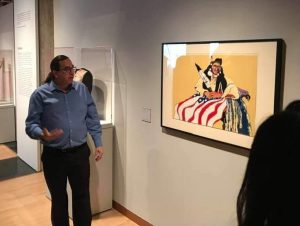
Ian: Opened in 1928, [the Abbe Museum] housed the collection of Native American objects gathered by radiologist Robert Abbe in a purpose-built building.
Newell was hired to lead the Abbe Museum in February 2020, just before lockdowns due to Covid-19 began. Today, Chris, a Passamaquoddy citizen, is the first member of the Wabanaki Nations to lead the Abbe Museum. But the decolonization process had been going on at the museum for the past five years.
Chris: The Abbe Museum has gone through the past five years under the previous Executive Director, the President-CEO at the time, Cinnamon Catlin-Legutko, a decolonization process. And part of that was not just in the content of the museum, which centers Native voices now, but also in the structure of the way the museum is run. And the Abbe has, over time, restructured its board to become a majority Wabanaki board. So, as a colonial museum that presents Wabanaki history, we are probably the only museum that has that structure, where the voice of the people that we are representing is now centered and also is governing the institution itself.
Ian: When the changeover in directorship happened, the museum changed the title from President and CEO to Executive Director and Senior Partner to Wabanaki Nations as part of this decolonization process and the shift of power.
Chris: When it comes to that portion of my job, I take it very, very seriously…I think about the museum world and the lack of representation by Native people in the museum world. There’s a history for the reason why that is, but what I always tell people is that it doesn’t do us any good as Native people to be absent from these spaces. No matter what these spaces are interpreting our cultures and our histories and everything else, therefore we need to be present there.
85 percent of Native people work in the museum field as an entry level of visitor services or security. And very few of us get up into the intellectual leadership positions and what I would want to do, in the long run, I would love to see the Abbe museum have full Wabanaki staff. I mean, that would be the biggest goal I could actually have, but how do I do that? I need to partner the community into the museum world. That way, the Abbe always feels like a welcoming space to any of the community members from the Wabanaki communities in Maine and beyond.
The way museums in the past have done things like hold on to Native American remains that has, you know, the older generation would not go into those physical spaces because of that. The Abbe Museum is one of the places where we have repatriated all of those remains and we’re making it into a welcome space and that’s a big change for the museum world.
Ian: But even outside of holding onto human remains, there are many examples of how museums’ default colonial mindset can—in addition to everything else—lead to a worse visitor experience.
Chris: As somebody that used to work in a tribal museum, it was not uncommon for me in that space for a non-Native visitor, whether a child or adult, to ask whether the tribe that we were presenting the history of still existed. There’s a lot of people in this world that still think that Native people are all dead and gone, and that’s oftentimes reinforced by their childhood experiences and their adult experiences going into a colonial museum and seeing artifacts that are only from the past or seeing our work that is only from the past.
And so for museums to update or be decolonized the way that they present themselves, they really gotta get out of that mode of trying to save a vanishing culture, but rather host the art and the histories of the living cultures that exist here now.
Ian: One of the easiest ways to tell if you’re visiting a colonial museum is if it doesn’t ask you as the visitor to normalize some aspect of the culture presented. So an Abbe Museum experience that only features maps with modern-day political borders, or is entirely in English, is not doing a good job of presenting the culture that members of the Wabanaki Nations share.
Chris: Two-dimensional maps are, of course, a European derivation or creation; Native people map the world in a different way. And we use songs, very long songs and orations, to map our territory. But if you go into the exhibits, what we did was we created a two-dimensional map of all of Wabanaki territory, but we took out the roads and the cities and all the colonial borders. And then when you see the landscape that way, representative in that fashion, you see how it all of a sudden makes sense how our tribes existed, the riverways that separated our territories and all of those things.
And you can see how people traveled great distances, how they would portage from one river to another. So it also is going to enrich the experience for the non-Wabanaki visitor, because they’re really going to be able to see our perspective and our worldview in our language and the way we view land—all of those things—not an interpretation, but rather a first-person perspective, which is really, really a powerful and impactful way.
Ian: Bar Harbor, Maine, is an international tourist destination—cruise ships dock there. Today, the museum’s exhibits and signage are mostly in English, but Newell hopes that under his tenure, much more Native language gets incorporated to the point where a non-Wabanaki visitor will have learned some Native words before they leave the museum.
Chris: It gets rid of the implicit bias that colonial museums have been feeding for so long…Viewing the landscape through the different languages really gives you a window into the different mindsets. The use of language I think is probably the best bridge that I can draw for making all of that happen.
When an English speaker learns some of our language and learn some of our worldview through it, they have experienced something. And so for the non-Native museum visitor, the international visitor, to come through and to learn our worldview through our language and to have it normalized, you know, to have the bathroom signs to say, “skitap” and “ehpit,” instead of men’s and women’s, and for people to figure that out with the international signs, but they would learn some of our wording and that’s a profound experience.
Ian: As Newell says, there’s no book and there’s no guide for the process of transforming the Abbe Museum from a colonial, traditional ethnographic collection into a fully decolonized museum run by members of the Wabanaki Nations. But because of work like this, the path becomes a little bit easier for other museums to follow.
Chris: We want to be informative to anyone who would walk through the door. But we also want to be informative to the Wabanaki person. And then by also doing that the Wabanaki people who already know that language come into a space that uses their worldview and then it doesn’t become a Bar Harbor institution to the Wabanaki visitor anymore. It starts to become a home away from home. We are in the land of the dawn [an English translation of the Wabanaki name], no matter what. And so the Wabanaki visitor should feel that sense of welcoming on walking into that space.
This is really a passion of mine, a passion that was born out of my childhood, watching my father, you know, making a difference in this world. And that’s what I would hope to do. I leave a lofty goal of my future in that I would hope that by the time I am done with this world, that I have changed it for the better, not just for the good of Wabanaki people, but for everybody.

